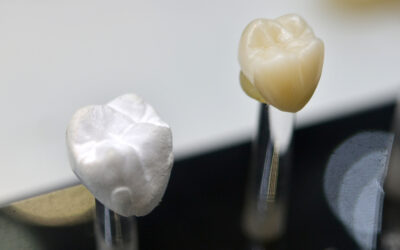The ToothWiz Blog
The Consequences of Procrastination: When Ignoring Dental Issues Backfires
Procrastination is a common human trait, but when it comes to dental health, it can have serious consequences. Delaying dental treatment can lead to the exacerbation of existing conditions and the need for more invasive procedures. For instance, a simple cavity left...
Unlock Lean Muscle Growth Without Lifting a Weight: Discover MassZymes
In the quest for a leaner, stronger physique, many of us turn to the gym, dedicating hours to lifting weights. But what if there was a way to accelerate muscle growth without ever touching a dumbbell? The answer lies in the power of proteolytic enzymes, and it’s...
Understanding the Urgency: Why Dental Care Can’t Wait
In the hustle and bustle of daily life, it’s all too easy to put off dental treatment. Many of us may find ourselves hesitating due to perceived lack of time or concerns about expenses. But what if we told you that delaying dental care could actually end up costing...
Decoding Dental Procedures: Inlays, Onlays, and Crowns – A Comprehensive Guide
When it comes to dental restorations, there are several options available, each with its own set of advantages and considerations. In this article, we will delve into the world of inlays, onlays, and crowns, providing you with a comprehensive understanding of these...
Sugar and Dental Health: Beyond Cavities
How Does Sugar Cause Cavities? Contrary to popular belief, sugar itself isn’t the primary culprit for cavities. Instead, it’s the acid produced by bacteria in your mouth that wreaks havoc on your teeth. Here’s how it works: Bacterial Activity: When you consume sugary...
Glycation and Its Impact on Oral Health
What Is Glycation? As if we don't have enough to worry about in life, now there's glycation to consider! Of course, you shouldn't worry about it, because that leads to a entirely different set of stress-related problems, but it's always helpful to understand more...
Optimizing Oral Health: Timing Your Toothbrushing to Combat Acid Erosion
Welcome to our latest discussion on oral hygiene, where we delve into the lesser-known aspects of toothbrushing. While we’ve often been told to brush after meals, today we’re highlighting why sometimes it’s best to pause before reaching for your toothbrush! The Acidic...
🌟 Unlocking the Secrets of AMPK: Your Body’s Hidden Energy Switch 🌟
What Is AMPK, and Why Should You Care? You might not have heard of AMPK (adenosine 5′ monophosphate-activated protein kinase), but it’s a behind-the-scenes superstar in your body. Imagine it as the master control switch that orchestrates everything from weight...
“An Apple a Day Keeps the Dentist Away” (And Other Nutritional Secrets)
1. The Dental Diet: More Than Just Crunching Carrots We’ve all heard about the benefits of eating our veggies, but did you know that your diet plays a starring role in your dental health? Drs. Weston A. Price and Royal Lee were pioneers in this field, and their wisdom...
Say Goodbye to Bad Breath: Tips for Fresher Breath
1. Understanding Halitosis (Bad Breath) Halitosis, commonly known as bad breath, affects millions of people worldwide. It’s not just an inconvenience; it can impact your social interactions, self-confidence, and overall quality of life. But fear not! With a few simple...
Dealing with Tooth Sensitivity: Causes and Remedies
The Problem: Sensitive Teeth Tooth sensitivity can be uncomfortable and affect your daily life. While not the only reason for tooth pain, it often occurs when the protective enamel on your teeth wears down, exposing the dentin and nerve endings. Causes: Worn Enamel:...
The Importance of Regular Dental Checkups
1. Prevention Is Key Regular dental checkups are not just about fixing problems; they’re about preventing them. Here’s why: Early Detection: Dentists can identify issues like cavities, gum disease, and oral cancer in their early stages. Catching these problems early...











